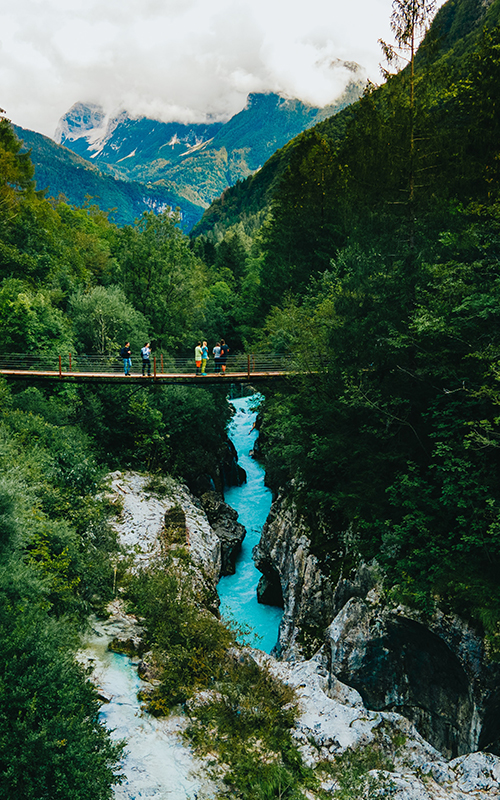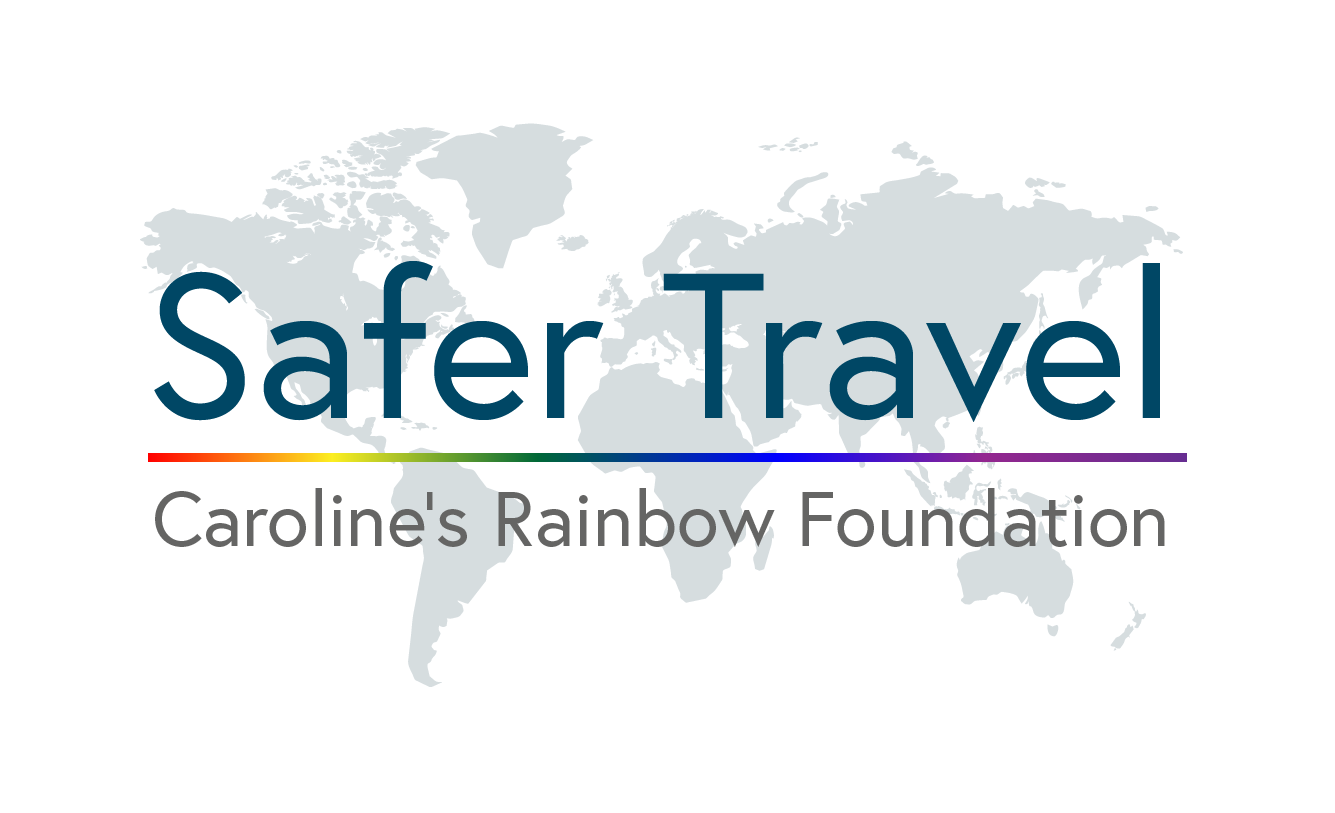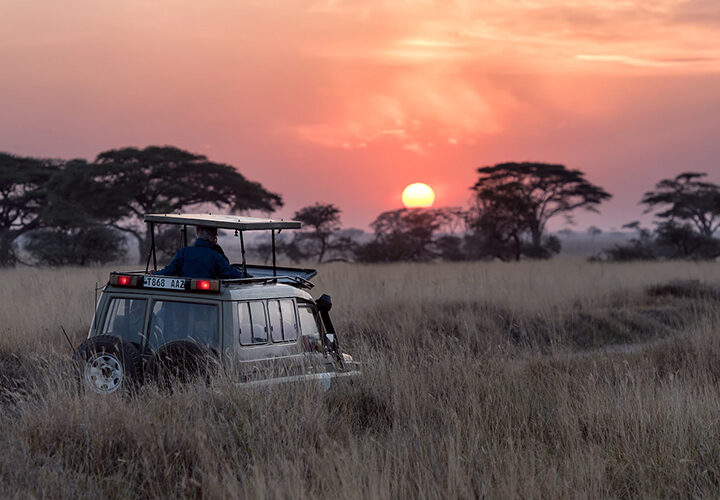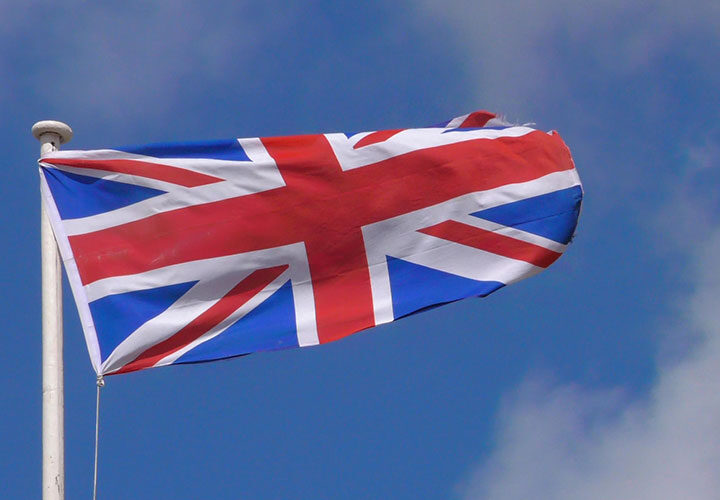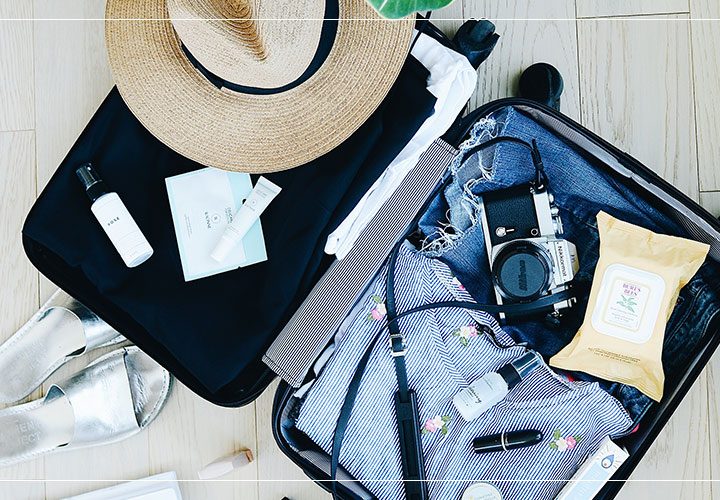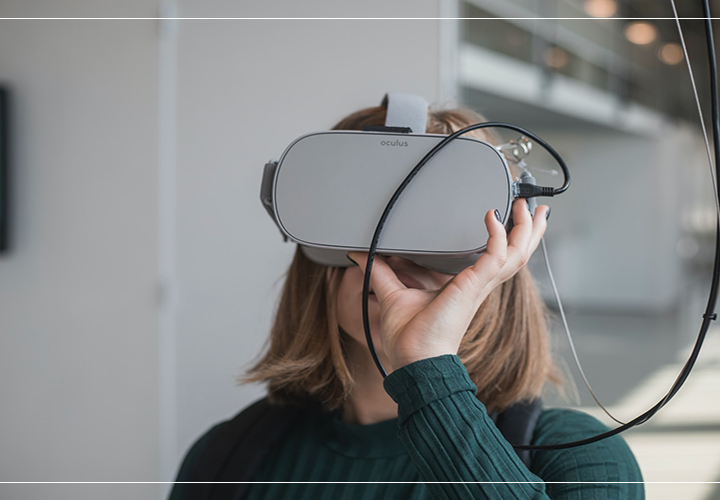Slovenia, and the art of planning a holiday
Inevitably, the first part of any holiday is the planning stage. For some people, this can be an exciting time to explore their options and see what different countries and locations have to offer, but for others this is a drag they just want to get out the way and get going with their holiday. Although everyone ‘plans’ their holiday to a certain extent (such as the flights you take, where you stay and which country you go to) there is a variety of different approaches beyond this. Some people love to plan every last detail of their holiday- from what they’ll do each day to how they’ll get there to what they’ll have for tea in the evening- whereas some people prefer to wing it and see what’s there when they get there, and base their itinerary around what they find. While both are perfectly valid forms of travelling, and work for different people, in this article I will explore the best things to consider when planning a holiday, how to go about finding this information and why planning beforehand makes holidays easier and more fun. In order to explore this, I will make a plan for a holiday in Slovenia; a stunning European country that many people have limited knowledge of, to show how planning can help uncover a whole host of exciting opportunities and change the way you think about your travels.
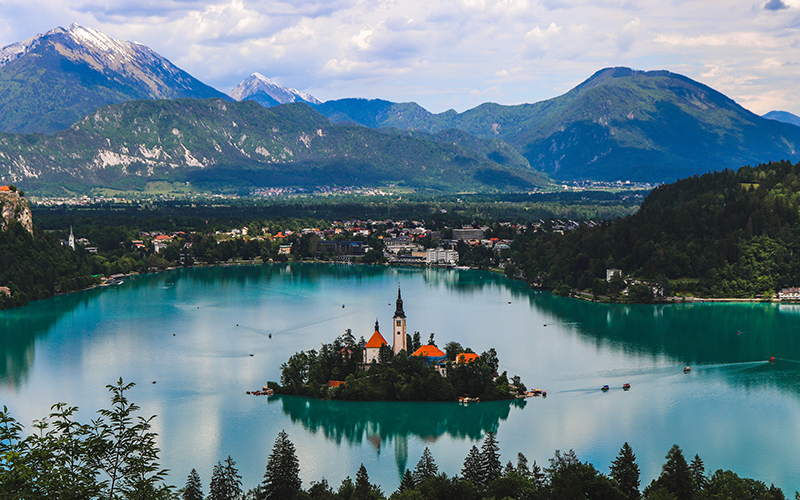
Slovenia is a country on the Balkan peninsula in south-east Europe, forming part of what used to be Yugoslavia, and Austria-Hungary before that. It was the first country to become independent of Yugoslavia in 1991, and has long since left its communist routes behind it. Considered, in the final years of Yugoslavia, the most prosperous state within this union, Slovenia has managed to keep this prosperity going, and is now one of Europe’s most diverse, successful and beautiful countries. Many people may not have heard of Slovenia, or may just associate it with being a Yugoslav country and therefore not think highly of it- but in reality, this small alpine country has much to offer, and is definitely worth a look for any traveller interested in unique culture, varied history and stunning beauty.
But in order to begin planning this holiday (or any holiday) there are some things to consider while planning. Here are my top five tips:
- Before you start planning, estimate the budget you’re going to have when you go. This is important as it may affect the scope of the holiday. For example, spending 10 days in Italy, moving around 4 different places within Italy, will be more expensive that staying in one place for all ten days. (Generally speaking; depending of course where you’re looking at staying.) So although budget doesn’t have to limit your time away, it may help you focus on where you want to go and what you want to do whilst you’re there.
- Things to do. When booking somewhere, always make sure you’ve picked somewhere with lots around you. For example, if you fancy a beach holiday in France, have a good look at what is around you. If you’re someone who just wants to relax on the beach for a week, chose somewhere secluded and quiet. However, if you’re someone who likes day trips and seeing a variety of places, choose a beach location in close proximity to other things you enjoy, such as exciting cities, vineyards or historical sites.
- The time of year you go will also really affect your experience. For example, places like Spain and Greece get very hot during summer, so if you’re not used to this climate, it might make the holiday unbearable. Equally, somewhere like Iceland or Finland in winter may sound amazing, but will also be incredibly cold and dark most of, if not all of, the day. So if you have a country in mind, I would recommend choosing the time of year you go based off the climate- for example I found September was the perfect weather for Italy. However if, due to work or family reasons, you can only take vacation times during the peak seasons (e.g. July, August, December etc) then it might be worth choosing the destination based off the season, and not going anywhere too hot/cold. If you do decide to go to somewhere that gets very hot/cold weather, always remember to pack appropriate clothing and factor the temperature into your plans.
- Once you’ve looked at flights, or however you’re going to get there, look at the transportation arrangements in the country, especially to get to places you want to go. Major cities tend to be well connected in most countries, but are there good transportation links to smaller or more rural locations? How long do these journeys take? And if you’re planning on hiring a car, do they have lots of hire cars available where you’re going? Are there any traffic laws that are different that you should be aware of? Details on public transport can usually be found online, such as on websites like Trainline (for some countries) and Rome2Rio, which can tell you the routes available and average pricing. I would definitely recommend trying to find these routes on the country’s train/ bus services’ websites as often the details and pricing aren’t 100% accurate, but it’s a great start to look at the transport connections available.
- Safety and cultural differences. Before you book any holiday, especially to somewhere you’ve never been, it’s always best to think about any safety issues that might arise. This could be anything from the security situation in the country, the places you’re planning to visit, the activities you plan to do (especially if you’re planning to go out at night) to the wildlife that’s present there. Consider also cultural differences- is there anything in your language, dress or behaviour that may be offensive to a different culture? Also consider if there are any cultural differences that may be an issue for you or someone in your group; for example many traditional dishes in African countries either include or are cooked in various varieties of nut, so if you or anyone in your group are allergic to nuts this might be an issue. So it’s always worth researching the culture of the country you’re heading to.
Once you’ve covered the initial planning stages, you’ll want to know more about the country. Here is my guide to Slovenia, as a prospective traveller myself:
Slovenia: a forgotten gem in the heart of Europe.
Bled: the idyllic base for a Slovene exploration.
Perhaps the most famous town in Slovenia, Bled is a town perched on the shores of the breathtaking Lake Bled. With crystal-blue waters and surrounded by Alpine peaks, Lake Bled is truly one of the most picture-perfect locations in Europe. It’s the perfect base for anyone who loves hiking and being outdoors, as as well walking around the lake there are numerous hikes in the mountains that surround this town, as well as a ski slope. Even if you’re not feeling adventurous, there’s plenty of places to enjoy sitting down with a drink and a Blejska grmada, a tasty traditional desert originating in the Bled area. The main attractions in Bled, besides taking in the views, include hiking, exploring Slovenian culture, and seeing the many beautiful and historic buildings here. This includes Bled Castle, which is the oldest castle in Slovenia and one of the most beautiful in Europe. Perched upon a cliff, Bled Castle offers stunning panoramic views of the lake and mountains from its ramparts, as well as a range of activities inside such as a museum about the castle’s history, tours around the chapel and grounds, and even the experience of trying traditional Slovenian hand-printing techniques and bottling your own wine. You can also take a rowboat out to Bled Island, upon which sits the beautiful Church of the Assumption (sometimes called the Church of the Mother of God on the Lake.) From here you can count the steps to the top, ring the wishing bell and make a wish, and explore more of the church and the island, including a traditional café and souvenir shop. Furthermore, this island gives stunning views of the lake all around you, and Bled town in the distance.
But while Bled would make an excellent day trip, it is also a great base from which to explore Slovenia. This is because it’s got good transport connections to much of Slovenia, it’s in between the Alps and Ljubljana, meaning it’s in a good location to travel easily to most places in Slovenia. On top of this, it’s simply a beautiful place to be after a long day of explore various other Slovene attractions. Despite being small, it’s very popular which means there’s an abundance of accommodation to fit most budgets (although there are cheaper options to stay in Slovenia such as Ljubljana or smaller, non-alpine towns.) I think this would make the perfect scenic base to use to explore Slovenia, and enjoy warm evenings by the lake.
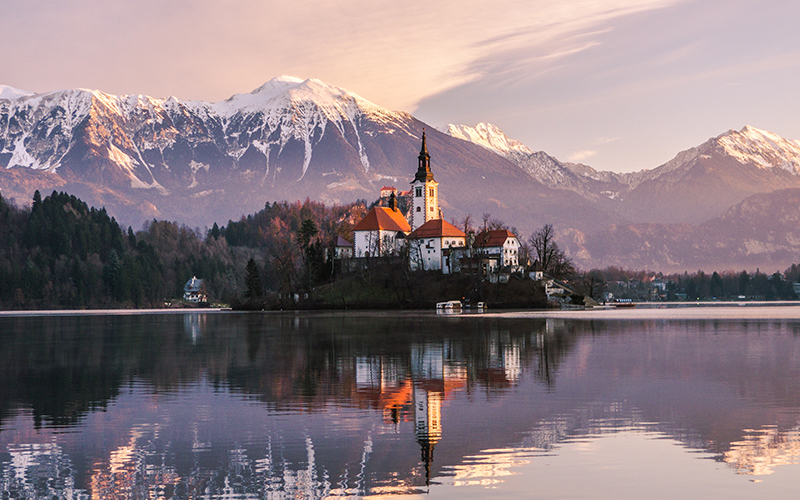
Ljubljana- a charming capital.
One of the first things you might think to do when visiting any country, especially a country as small as Slovenia, is pay a visit to the capital. Compared to capitals like London, Paris or Rome, Ljubljana is a small and humble city, however it is no less exciting. Often referred to as the “green capital of Europe”, Ljubljana is committed to sustainability and green spaces, and you can really feel this in the city’s charm. There is an abundance of parks and green spaces, less traffic and built-up areas in the preserved centre. The Ljubljancia River gracefully winds through the city centre, and is met with many charming terrace cafes and restaurants that allow you to dine on its banks. Ljubljana has many beautiful bridges, the most famous of these being The Triple Bridge, which leads to the Prešeren Square, a must visit square and hub in the centre of the city. These three enchanting bridges are designed by renowned architect Jože Plečnik, who is most famous for his impact on the architecture of Vienna, Prague and Ljubljana. The architecture here is also heavily influenced by the Habsburg dynasty, the royal family that controlled much of central Europe from the Middle Ages until the First World War. The Habsburgs claimed Ljubljana in 1515 when they expanded their control of the region, and the city grew as a result. Most of Ljubljana’s historic capital is defined by Habsburg era wealth and opulence, giving it a similar look to Vienna and Prague, and allowing it to stand out from other Balkan cities, which had less or no influence from the Habsburgs. As a result, this small but beautiful capital is an interesting mix of cultures, and defined not only by the larger powers that have controlled it for most of its existence, but also a sense of unique Slovene cultural identity that makes it unlike any other city in the world.
As well as being pretty, Ljubljana also offers a wide range of activities that really make it worth adding to your Slovenia plan. Ljubljana is a slow-paced city, with an emphasis on taking it easy, enjoying the sights and savouring the cuisine. There are loads of terrace cafes, so enjoying a drink and some food while taking in the scenery is a must while here. One of the main attractions in Ljubljana is its castle- this imposing fort sits atop a hill in the centre of town, looking over the whole of Ljubljana. You can take a short hike up the hill to the castle, enjoying the views of the city as you go, and have a look around to explore Ljubljana’s history, and see the castle’s reserved rooms. From the top of the towers, you can enjoy panoramic views all across Ljubljana and, on a clear day, the Alps in the distance. There’s also lots more on offer in Ljubljana, from exploring the shops and beautiful buildings of the old town, to paying a visit to the National Gallery of Slovenia or the City Museum of Ljubljana, to relaxing after a long day exploring the city in the serene Tivoli Park. Ljubljana may be small for a capital, but it more than makes up for it in beauty, culture and greenery, and is definitely worth adding to any plan for a holiday in Slovenia.
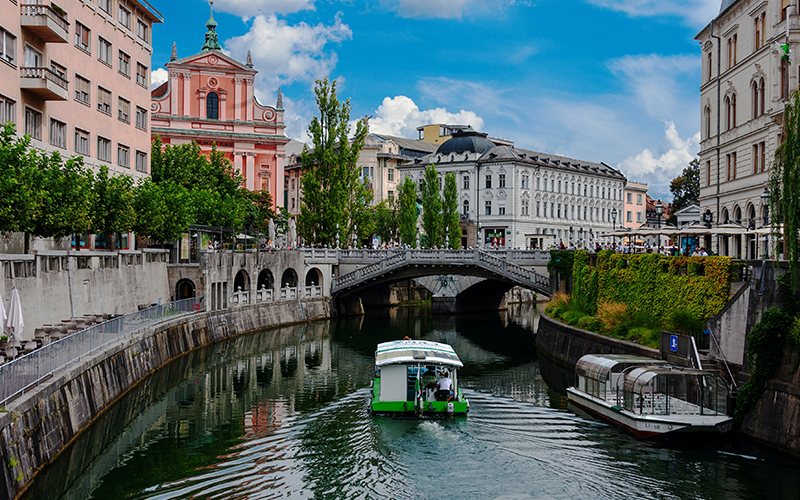
Alpine peaks and underground depths.
It would be remiss to discuss planning a holiday in Slovenia without mentioning the Alps. The Alps are the largest mountain range entirely within Europe, and spread across the countries of France, Monaco, Switzerland, Italy, Liechtenstein, Germany, Austria and finish here in Slovenia. The Alps vary slightly between regions, due to how vast this range is, and the Julian Alps (the section in North-Eastern Italy and Slovenia) are among the most impressive. There are a variety of ski slopes, roads and paths that wind through the Alps, giving unforgettable views. Unfortunately, due to the especially rugged terrain of this section of Alps, there are few major towns in the most impressive mountainous regions, but there are a few you can visit such as the aforementioned Bled, Bohinjska (the town nearest to Lake Bohinj, an equally beautiful Alpine lake), Kranjska Gora or Trenta. These towns offer an insight into unique Alpine living, as well as stunning views and incredible hikes. I chose these four examples as they are connected to Bled and Ljubljana (the two recommended bases) by public transport, however there are others along these bus routes, and if you have a car then exploring the Alps in your own way, at your own pace is an excellent idea. And although some of these villages, such as Trenta, may not offer as much as somewhere like Ljubljana in terms of shopping and attractions, the journey here, be it by car or bus, is absolutely stunning and the scenery, as well as access to hiking trails, is second to none.
But the Alps aren’t the only example of stunning natural beauty you might want to consider seeing in Slovenia. You might also want to try the Postonja Cave, a huge and intricate network of caves in the town of Postonja in the South-West of Slovenia. This cave is famous for its surreal look, with huge stalactites and stalagmites which have grown over centuries giving it an enchanting look. The cave is limestone, giving it a beautiful white appearance. The whole cave system is about 15 miles, and visitors can explore around 3.5 miles of this, including vast passages, intricate cave networks and galleries that showcase the unique geology, as well as the rare and fascinating fauna that have evolved to live in these dark depths. There is also an electric train that can take you around more comfortably, which comes with a guided tour telling you all about the history and geology of the cave, while you marvel at the immense size of the intricate rock formations. Once you’ve finished exploring the beautiful cave, there is also Predjama Castle just adjacent to the cave. A stunning medieval castle built into the rocks; visitors often pair a visit to the cave with a visit to the castle. This is especially good if you or someone in your group doesn’t feel very comfortable exploring underground caves, they can enjoy the castle and the town of Postonja instead!
Slovenia is packed to the brim with stunning nature and outdoor activities, so whether you like hiking and caving or you just want to sit and enjoy the Alpine view, a visit to Slovenia wouldn’t be complete without appreciating this country’s stunning geography.
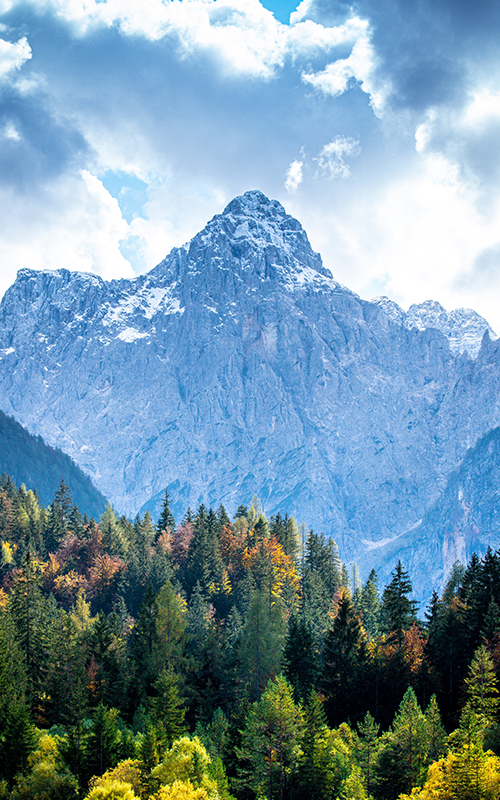
Coastal wonders.
Although Slovenia is most famous for its Alpine geography and quaint towns, it also has a modest coastline of the Adriatic Sea. Measuring in at only 29 miles long, this coastline may be amongst the smallest in the Mediterranean, especially when sandwiched between Italy and Croatia who both have extensive coastlines, but it is by no means worth skipping. There are a few towns on the Slovenian coast, the most famous are Piran and Koper. Both of these towns have stunning architecture, and amazing views of the Adriatic. Koper is Slovenia’s largest and most significant port town, and has rich history dating back to the Roman times, where it was an important port outpost. It was narrow streets and squares, plenty of charming cafes and restaurants, and landmarks like the Cathedral of the Assumption. There are also lots of maritime events that take places in Koper, as it is still very much a working port, so you can see regattas and other exciting maritime events here. Further south is the town of Piran, the most popular tourist destination on the Slovenian coast. With its magnificent old town which struts into the Adriatic, it is without a doubt one of the most beautiful towns on the Mediterranean, not just the Slovenian coast. With a host of beautiful churches, restaurants and museums, Piran is the ultimate coastal town to relax and enjoy the azure Adriatic views. There are also a wide range of walk and bike routes around the coast with stunning views, and nearby is the Sečovlje Salina Nature Park: a salt pan landscape with shallow pools and channels where salt is harvested. The park is a haven for birdwatching enthusiasts, as it attracts numerous bird species, including flamingos!
Although often overlooked, the small Slovenian coast offers stunning views and an insight into a different type of Slovene culture, and should definitely be considered when planning a trip to Slovenia.
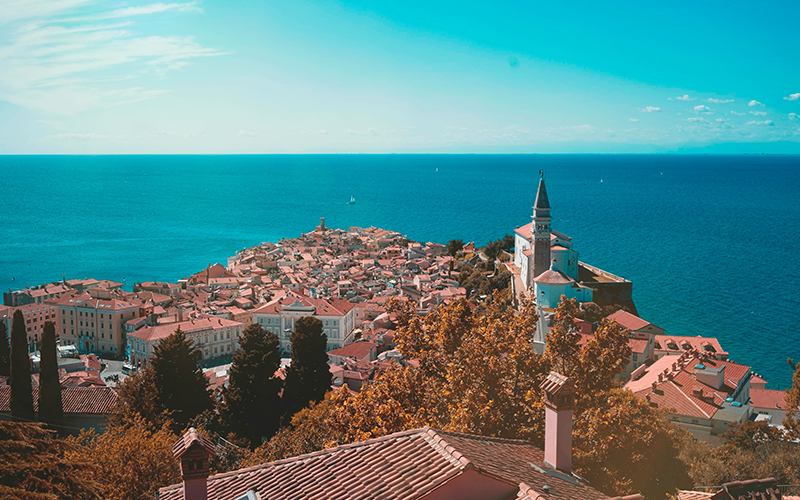
Things to consider whilst in Slovenia.
Slovenia is overall a very safe country, however there are a few safety considerations and general tips I’d recommend keeping in mind, and factoring into your planning of a trip to Slovenia.
- For nearly all of its history, the region that is now Slovenia has been controlled by various other entities, from the Roman Empire to the Habsburg Empire, to Austria-Hungary and most recently Yugoslavia until its independence in 1991. Although Slovenia gained its independence with much less bloodshed than other former Yugoslav countries such as Croatia or Bosnia, there was a 10-day war fought by Slovenes to win their freedom from Yugoslavia, and the disputes over the borders that would be drawn caused ethnic tensions in some regions. Therefore, although Slovenia doesn’t wear the scars of its Yugoslav past as prominently as some of its more afflicted neighbours, it’s important to keep this history in mind when visiting here and be respectful- this isn’t ancient history, and will have affected the lives and livelihoods of many Slovenes still living, and their families.
- Although English proficiency is good overall in Slovenia, you might find access to the English language is harder here than in it’s neighbours like Italy and Austria. Less people speak it and, due to a lack of tourist until recently, it appears less in places like menus and road signs. It’s always best to learns a few phrases in Slovene, and if possible, bring a translation app on your phone.
- As with anywhere, always be aware of pickpockets in Slovenia. Although it is generally safe, in more touristy places like Ljubljana, Lake Bled or Piran keep a close eye on your belongings, and keep them out of sight and in a zip bag if possible.
- You may encounter scams in certain places in Slovenia, so be on your guard. These apply especially in places such as crowded touristy areas like Piran or Lake Bled, and busy places like train stations. These scams can be wide ranging, from offering you things like bracelets and flowers then demanding money, to offering to take your money to help you buy tickets (especially if the English language services are limited, see above) then stealing this money, to offering to help carry your luggage to the train and either stealing it, or demanding payment once they’ve helped you. Always be aware, especially in crowded places, and don’t accept anything people just give to you. If you need help, always ensure the person you ask is legitimate before accepting help. This goes for taxis and tours too, where people have been known to have been scammed through fake advertisements online. Although check the validity before purchasing.
- Being safe in the Alps. If you’re going into the Alps, especially in very rural locations/longer hikes, keep safety in mind. Remember to tell someone where you’re going, and always bring the following:
- Good walking shoes that you find comfortable.
- A waterproof coat.
- A warm layer, even if you decide not to wear it and just keep it in your bag.
- A torch, in case it gets dark or foggy while you’re in the mountains.
- A whistle- very important, if you need help up there you will quickly lose your voice calling for help, but you won’t blowing on a whistle.
- Enough food and water.
- A map.
- Your phone and a list of emergency contacts.
Remember there are also bears in the Alps. These are brown bears, and are rare and usually steer clear of humans and won’t be aggressive. They tend to inhabit mostly forested areas, in regions well known to the Slovenian authorities. It’s always best to ensure food isn’t left out, especially if camping. If you do encounter an aggressive bear (which is incredibly unlikely) remember to make yourself big, and make lots of noise. Always research and follow the guidelines of the local authorities if you’re going into a region with bears. It is worth noting however, if you like bears there are guided tours that allow you the opportunity to see them in the wild, in ways that are designed to be non-intrusive and safe for both the humans and the bears.
- Slovenia can get warm in the summer months, especially in flatter regions and by the coast, so if you’re travelling at this time remember to bring sunscreen, sunglasses and clothes appropriate for warmer weather. Conversely, in winter it gets quite cold, especially in Alpine regions where snow is very common. Bring suitable clothing for these weather conditions, and beware of icy surfaces, as trails and paths that aren’t part of towns often aren’t salted and can therefore become very slippy. Remember to dress modestly and act respectfully around religious sites, as entry may be barred if you’re wearing certain types of clothing such as swimwear or short-shorts.
So, why plan?
Most people, myself included, would probably confess to knowing little about Slovenia before either reading this planning guide, or doing their own planning. Nearly all of the knowledge contained in the above guide comes from my own planning and research- I have neither been to, nor know anyone else who’s been to, Slovenia. This highlights just how much of a broad overview you can get of a country before you visit, but why plan? Why not just book a hotel in Slovenia’s capital (or wherever you’re wanting to go), fly there and then see what exciting activities the country has to offer when you get there? The truth is there’s nothing wrong with this format, so long as you have done the basics of planning such as booking a hotel, getting some of the currency and checking you meet the visa requirements to go there. Some people prefer the spontaneity of deciding what to do each day on that morning, and seeing what a country has to offer by being there, not through an internet search or a blog like this one. However, planning makes a trip run much more smoothly, as it means you know what to expect and what not to expect before you arrive. It also means you can understand public transport better, as often services are complicated or irregular, and it saves you time in the bus/train station trying to work out where you want to visit, and how to get there. And above all, planning means you can get excited about your next holiday. If you’ve got a location and itinerary in mind, it will mean you can get excited about going earlier, and look forward to what you’re going to experience. Planning is also important from a safety standpoint, as if you’ve got the knowledge and awareness of the dangers, crimes and scams that are common in the region, you’ve got a much better chance of avoiding them, and/or knowing how best to react if you do find yourself in these situations.
In short, how you plan your holiday is up to you. And leaving room to change plans and add news things in is always recommended, as often you might discover something there you really want to try, so you don’t have to have the itinerary set-in stone before you go. Planning should just be about acquainting yourself with the place you’re going to visit, knowing what to expect, and above all preparing yourself to have a wonderful holiday.
Written by Jeremy Hodgson
